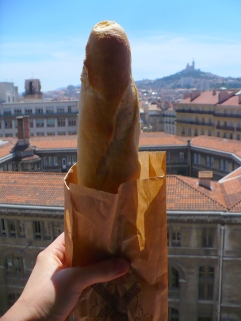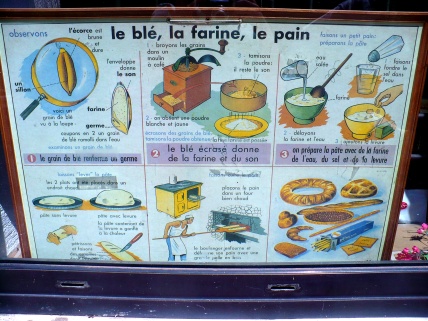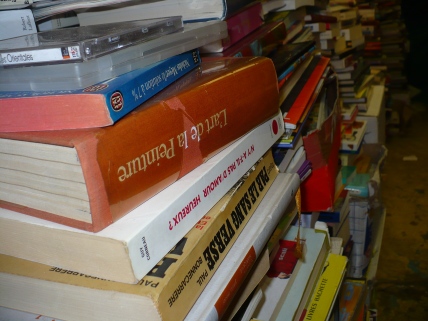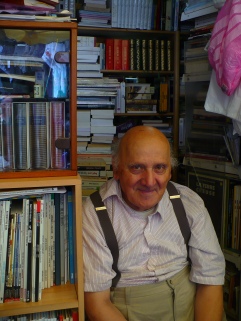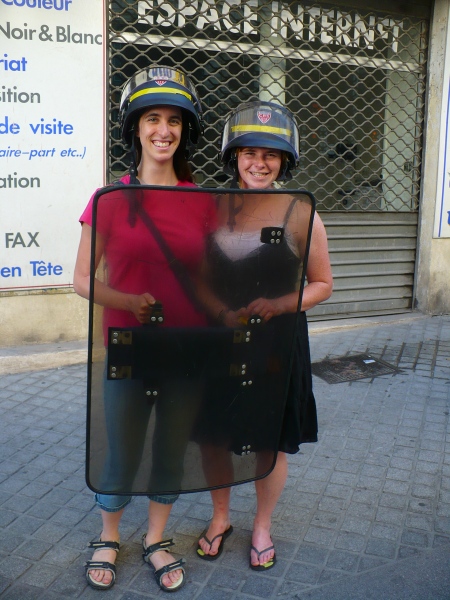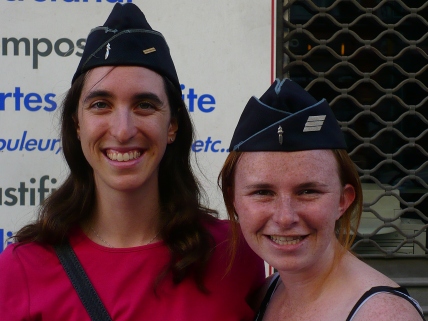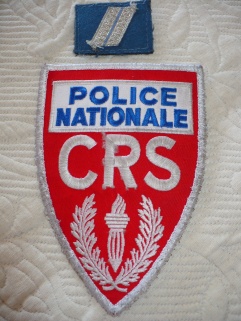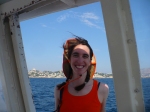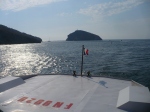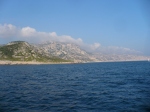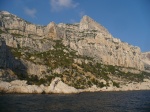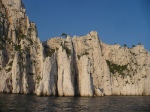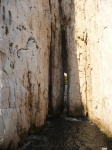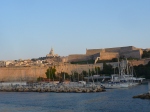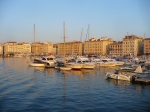I’m back in Europe to give a talk at a conference, and that continent is always an interesting experience, so it seemed like a good time to write a post to break up the monotony of nothingness for a year. Living in the US seems to provide fewer interesting interactions, maybe because I delude myself into thinking I know my way around the language and society.
This trip has been, and should continue to be, very exciting, but has presented both a linguistic and a kinetic puzzle to the extreme. The conference (AMLaP, in case you were wondering) took place in Riva del Garda, Italy – a resort town at the head of an enormous and gorgeous lake nestled at the foot of a collection of Alps. Needless to say, this is not necessarily the most convenient location to get to, especially from California. Dan and I left San Diego at 9am on Saturday morning, drove up to LA, spent the morning with his brother and future sister-in-law, drove to the LA Times parking garage to leave the car, walked to the train station, took a bus to the airport, flew to San Francisco, flew to Frankfurt, flew to Venice, and finally took an unbelievably slow water taxi (which was super cool for the first 20 minutes, being excited about getting around a city on roads made of water, but rapidly became much less novel after being on the same, slow boat for the next hour.) We finally made it to our Venice hotel at 9pm Monday night, 27 hours after we’d left San Diego.
We stayed in a very small, family-type establishment for two nights in Venice before heading off to Riva. (Getting there required a walk across most of Venice [dragging our suitcases], a train to Verona, another train to Rovereto, and then finally a bus to Riva del Garda.) The owner’s mastery of English was rather lacking, much like mine of Italian, so the entire check-in process consisted of repeating Dan’s name several times, and then smiling broadly and nodding profusely when they finally figured out who we were (which seemed to be triggered only when they recognized Dan’s middle name). Over the next couple of days, however, our main contact was Mario, who seemed to be the entirety of the housekeeping staff. Dan and my combined production abilities in Italian are limited to the essentials (“senza carne, pesche, fruiti di mare!”) and to music terms, none of which are so useful when talking about train tickets, (though very useful for coming up with possibilities for strange restaurant encounters: subito pesche! carne fermata!) But from knowing Spanish and French, I can understand a substantial amount of Italian – the problem is that when I try to say anything, it comes out as a garbled mass of Spanish words, French grammar, and English gratification phrases. Amazingly, however, my conversations of this sort with Mario were actually productive: he’d speak to me in Italian, I’d speak back in Generic Romance.
In Riva, we spent most of our days in the conference center, learning about language predictability and code-switching and other fun psycholinguistic topics. But every night, when we went into the little square next to the lake (stuffed in every conceivable corner with cafes, roving musicians of widely varying talent, and Indian-looking men selling neon blue light-up spinners), we saw this bright white church, lit up with floodlights, incredibly high up on the mountain, built flush with the face of the rock. It looked impossibly high up – at least 5-6 hours of nearly vertical climbing. When another conference goer told us that somehow, the round trip only took a much more reasonable 3 hours, we decided we had to do it.
So the morning we were leaving, we got up at 7:30 and started climbing up the Alp. It was steep, to be sure. The little chapel is 535m up, and the path wound back and forth over 3km in hairpin turns. It was definitely hard going – couple days later, we’ve still got sore back and calf muscles. But up on top, the view was absolutely spectacular. I am unfortunately not going to be a very good recounter here, since I don’t have my laptop and so can’t upload any pictures from the hike. But for now, suffice it to say that the chapel was minute, which was the source of it looking so far away; it was an optical illusion such that our brains assumed that the reason it looked so small was distance rather than true size. It commanded a view across the entire valley, looking straight down to the lake below, glittering from the sunlight. The plain, with Riva and various surrounding towns, stretched completely flat until it hit the mountains on either edge, except for one anomalous mini-mountain which popped up directly in the middle. In fact, this mini-mountain was still awfully steep, and the bus from Rovereto wound its way first up and then down its very narrow road.
We rather reluctantly climbed back down, partly because didn’t have any food with us, partly because we needed to begin another epic 11-hour stretch of travel to get to the Greek island Santorini, where we currently are. Our Greek language skills are exactly nonexistent, though years of math (or maybe college fraternities – guess which was more useful for us two!) has taught us the alphabet so we can mostly sound things out and then verify our out-sounding using the English description written immediately below. Of course, this doesn’t mean we can actually understand anything at all, but so far, that hasn’t been a problem because everyone speaks English. We’ll see….



 Posted by stormingthebrain
Posted by stormingthebrain 